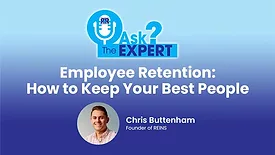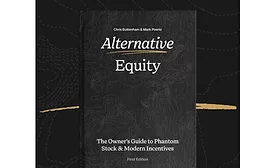Home » Keywords: » employee retention
Items Tagged with 'employee retention'
ARTICLES
Reins CEO Chris Buttenham to speak at Service World Expo 2025
The leading expert in alternative equity solutions for the skilled trades will share insights and best practices to support employee retention
October 14, 2025
Is “Company Culture” Just a Buzzword at Your Restoration Business?
Culture isn’t a perk. It’s a business model restoration leaders can’t afford to ignore.
Read More
Ask the Expert
Brand, Culture and the Next Generation of Restoration Professionals
Alexus Neidert of Thomasville Restoration discusses her journey, company culture and what it takes to lead the next generation of restoration professionals.
Read More
Ask the Expert
Employee Retention: How to Keep Your Best People
Chris Buttenham shares real-world retention strategies you can implement in your business immediately
Read More
New book discusses link between alternative equity and employee retention
New book explores phantom stock and modern incentives for privately owned businesses
July 8, 2025
You Don’t Have a Performance Problem, You Have a Culture Problem
Why public criticism kills morale and how real leaders build trust behind closed doors
Read More
Industry Veteran Launches Orange Dog Labor to Provide Reliable Temporary Labor Nationwide
Industry Veteran, Cara Driscoll, Launches Orange Dog Labor to Deliver Legal, Vetted Temporary Workforce Solutions Nationwide
May 13, 2025
Why Restoration Sales Professionals Leave—And How to Retain Them
Learn why restoration sales professionals leave and how to keep them engaged
Read More
The Workforce Crunch: The Struggle to Find and Keep Skilled Labor
Overcoming Workforce Challenges in Our Booming Restoration Industry
Read More
Stay ahead of the curve with our newsletters.
Get the latest industry updates tailored your way.
JOIN TODAY!Copyright ©2025. All Rights Reserved BNP Media.
Design, CMS, Hosting & Web Development :: ePublishing















